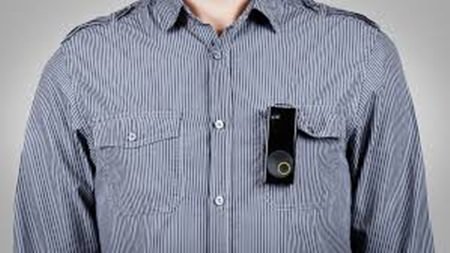When digital photography first became affordable for the average photographer, I was not convinced that it would be the success that it has become.
I am not a technophobe, but I take some time to evaluate new technologies.
When I think of technology and its effects upon us, I will let you into another secret skeleton in the family cupboard – I only bought my first fax machine because I was embarrassed by people asking me for my fax number. I could see no way I could use it! Wrong again. Mind you, I’m not as bad as David Ogilvy (Ogilvy and Mather Advertising Agency) who turned down the Xerox contract as he couldn’t see that the company had any future by just copying things!

A couple of years ago I mentioned the Autographer, another development of technology, and another which I thought had a very limited usefulness. What brought this idea back to me was when I saw someone wearing one at the weekend.
As opposed to cameras you hold, this photographic “device” can be worn around your neck, like the medallions or pendants, clipped to clothing or placed in a particular vantage point, is the first consumer device from British company OMG (Oxford Metrics Group and not Oh My God), whose stop-motion technology is used in fields ranging from computer game development to surveying roads.
OMG said it originally developed a version of the Autographer as a memory aid for people with dementia, but said it decided to launch it to the broader market after finding users and their families were also using the devices to record and remember special occasions.
OMG chief executive Nick Bolton said the camera occupied a space between stills photography and video. “It can capture really meaningful single images, but there’s actually something about watching the day back in sequence,” Bolton said. “It tells a story about the day you’ve just experienced.”
This camera knows when to take shots with its preprogrammed sensors, including a light sensor, temperature sensor, compass, IR-based motion detector and accelerometer. The software in the camera takes these inputs and uses them to decide when to capture an image. In addition you must set the Autographer to Low, Medium or High shooting speed, which capture around 50, 100 or 200 images per hour respectively.
Now that’s a lot of photos whichever way you look at it. At the Medium setting you could be producing 1,600 images a day, which is more than most people would care to trawl through. Of course you’re unlikely to use it while sitting at your desk, or working in most jobs. Wear it on an evening out, or to a sports event and keep it on Low and you’ll get around 200 images to flick through when you get home. That is still more than I would like to review.
The sensor itself is not so large in these days of 20 plus megapixels, being only five megapixels but the lens has a field of vision of 136 degrees. “We’ve spent a lot of time developing our wide-angle eye-view lens which is at the heart of the Autographer’s story-telling ability. It gives a unique first-person perspective that allows the wearer to tell their story uninhibited as they see it,” or so says the manufacturer.
The blurb claims “Autographer doesn’t just effortlessly capture images, it captures stories. This offers limitless possibilities for ‘creatives’ and professionals too. As the device is hands-free and wearable, it’s more versatile than a traditional camera in many circumstances; it’s only limited by the imagination of the wearer.”
However, here comes the technology of today – it can connect to smartphones via Bluetooth or computer via USB cable, OLED display, 8GB of on-board storage and there is also a shutter button on the side of the Autographer to allow you to manually over-ride and decide when you want the shot to be taken.
That means the company thinks it should appeal to anyone interested in recording an event without having to operate a camera, or as an additional tool for documentary photographers.
It is already on sale from the company’s website for £399.
You can read more: http://www.smh.com.au/digital-life/cameras/smile-please-clickfree-camera-takes-photos- for-you-20120925-26i2y.html#ixzz27XB0t45N




